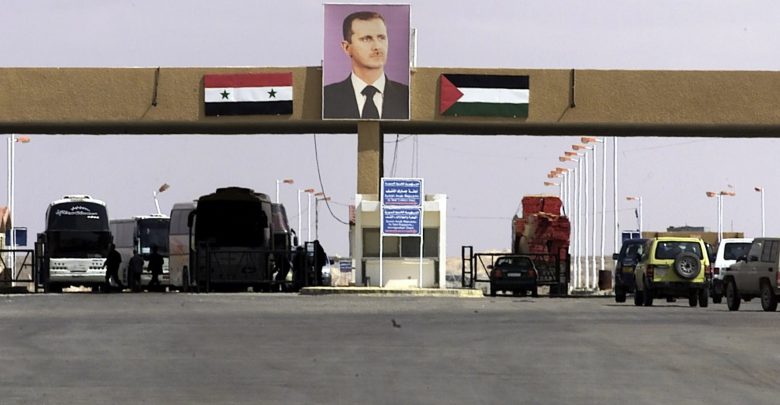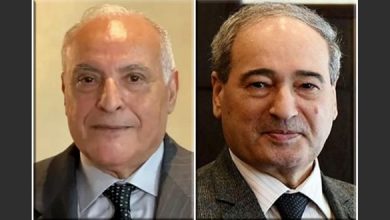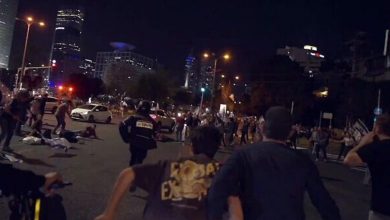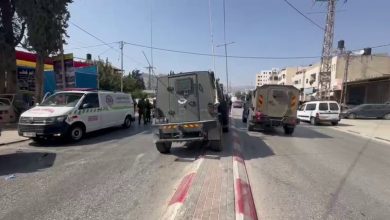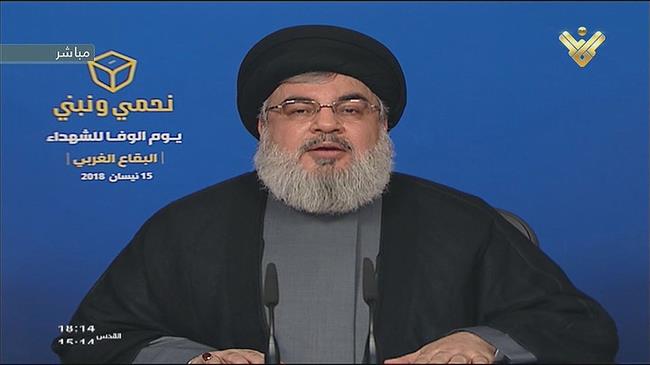Who is Mohammad Deif, the Resistance leader, bane of ‘Israel’?
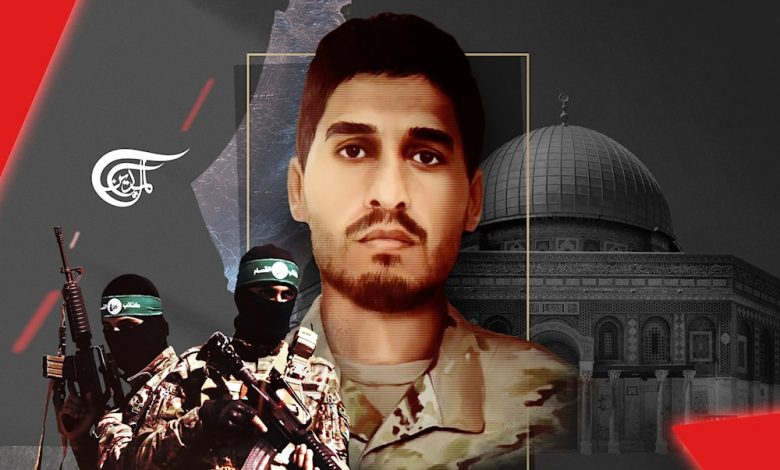
Mohmmad Deif is a name that is no stranger to headlines and media discussions at a time when he coordinated and dealt what is arguably the most devastating blow to the Israeli occupation since its inception, Operation Al-Aqsa Flood, giving hope to the Arab and all the righteous people that “Israel” was not that invincible entity it has proclaimed to be.
While picking holes in the Israeli occupation’s deterrence has been his profession for decades at this point, little is known about the Resistance leader who has put Hamas at the top of the list of threats to the very existence of the Israeli occupation through his strategic prowess and admirable patience that culminated in the Palestinian cause receiving more worldwide and regional support than it ever has.
Early life
Mohammad Masri, better known as Mohammad Deif, the leader of Hamas’ military wing, the al-Qassam Brigades, was born in 1965 in Gaza’s Khan Younis refugee camp, whose establishment was the result of the Palestinian Nakba of 1948. His family was forcibly displaced from the village of al-Qubayba along with the hundreds of thousands of others who were forced to seek refuge elsewhere in light of the Zionist mobster massacres that took place during the Nakba.
Though there was no indication that he would become the military mastermind he is today, Deif grew up like many other Palestinians who were displaced by the Israeli occupation – in a dire and destitute environment as his family was forced to make a home out of a tin shack in the refugee camp, a situation that would go on to revolutionize numerous Palestinian Resistance leaders.
At just the age of two, Deif’s country was further ravaged by the Israeli occupation, as it occupied the Gaza Strip during the 1967 war and subsequently subjected all the refugees that had fled its brutality to direct military rule, detaining, arresting, and even executing anyone they thought was ever so slightly “suspicious”, as per their definition of suspicion, which would mold the young Resistance-leader-to-be as he grew up surrounded by extrajudicial arrests and killings at the hands of an occupying force that knew no bounds.
This is evident in the fact that mere meters away lived some of the most notable Palestinian figures, including Hamas leader Yahya al-Sinwar and the former chief of Fatah in Gaza, Mohammed Dahlan, whom Deif grew up being friends with.
Deif grew up pursuing his education and helping his father, who was an upholsterer in an impoverished, newly-established refugee camp that was under military rule, which didn’t quite offer many fruitful career paths. However, that did not stop Deif from dreaming big and pursuing a degree in science at the Islamic University of Gaza, where he studied physics, chemistry, and biology.
He also trod a path that no one expected to lead him to be the leader of one of the world’s most renowned Resistance factions, as he headed the University’s entertainment committee and performed in numerous comedies.
Early political career and imprisonment
At the time, he was not affiliated with any political organization, but it was only a matter of time before he joined the Fatah Resistance movement, one of the only two Resistance factions in Palestine at the time. Though it is unclear when exactly he joined Fatah, he was likely influenced by his childhood friend, Mohammad Dahlan, to join the organization at a time when it still engaged in armed Resistance against the Israeli occupation on a wider scale.
He stayed as part of Fatah for numerous years, but little is known about his activity at the time up until he wound up joining Hamas during the first Intifada, which began in 1987 and saw paramount violence practiced by the Israeli occupation against Palestinians.
Israeli occupation forces arrested Deif in 1989, shortly after he joined Hamas. He was detained without trial on the charge that he was cooperating with Hamas’ military wing, which saw him spend 16 months in prison. He eventually earned his freedom after he refused to cooperate with the Israeli occupation forces or admit to any of the charges filed against him.
Deif was later arrested by the Palestinian Authority in May 2000, but he managed to garner his liberty once again with the start of the Second Intifada, which was a pivotal point in the development of Hamas’ capabilities, wherein the Resistance group carried out a string of operations that cost the Israeli occupation hundreds of casualties.
Little did the Israeli occupation know that his time in prison in the 90s would lead to the creation of what would later become the al-Qassam Brigades.
Putting al-Qassam on the map
Deif agreed with martyrs Zakaria Chourbaji and Salah Shehade to form a group independent of Hamas to capture Israeli soldiers in order to trade them with Palestinian detainees and force concessions out of the Israeli occupation.
His release following his 1989 detention coincided with the emergence of the al-Qassam Brigades – named after Sheikh Ezzeddine al-Qassam, one of the most notable leaders of the Arab struggle for independence against the British and French mandatory rule in the Levant – as a prominent force in the Palestinian struggle for liberation after it made headlines over the slew of operations it carried out against Israeli occupation forces.
In light of the prominence garnered by the Resistance faction, Deif, along with several al-Qassam commanders, traveled to the occupied West Bank, where he stayed for several years and supervised the founding of the al-Qassam’s West Bank branch before emerging as the leader of the al-Qassam Brigades in 2002.
As a leader, Deif masterminded numerous successful operations against Israeli occupation forces, including the capture of Israeli soldier Nachshon Wachsman, whose killing disturbed the ongoing Oslo Accord talks between the Israeli occupation and the Palestine Liberation Organization. The talks were heavily opposed by the Palestinian people and Resistance as “peace” talks with an occupying force could not be seen as a legitimate option for liberation and would only lead to further subjugation.
In the wake of the 1996 assassination of Resistance icon Yahya Ayyash, a prominent military leader nicknamed The Engineer for his contributions to the advancement of the Resistance’s IED manufacturing capabilities, Deif planned a string of Resistance operations in retaliation for his killing, including the Jaffa Road bus bombings, which killed more than 50 Israelis in total.
Deif played a key role in the advancement of Hamas’ weaponry and tactics, including its seemingly never-ending stream of rockets and its vast tunnel network, which has left the Israeli occupation puzzled despite spending months on the ground in Gaza. This put him high up on the Israeli occupation’s wanted lists, and his ranking only rose with time as his contributions to the cause increased.
Life in the shadows
It is not at all odd that little is known about the Resistance leader’s early life, for he did not aspire to be renowned, spending his time in the shadows to develop Hamas to be the force to be reckoned with as it is today. Even to this day, only two or three pictures of his have surfaced, as he seeks to keep as much of his life veiled as possible, for it is a matter of life or death due to the Israeli occupation’s pursuit of the leader.
Deif in Arabic means “guest”, which pretty much sums up how he has been living for decades, going back to his nomadic Levantine roots and shifting from one place to another swiftly without leaving a trace so as to evade Israeli occupation forces, which made him all the more popular as a hero surrounded by an unparalleled mystique.
He was so mysterious, in fact, that Israeli journalist Shlomi Eldar, who interviewed numerous Hamas members, speculates that the Israeli Shin Bet intelligence agency “would not recognize him if they passed by him on the street.”
Deif has never appeared in the media, and the only known photo of him until a few months ago was one dating back to May 14, 2000, likely a mugshot taken when he was arrested by the Palestinian Authority. Israeli occupation forces published a new image a few months ago of who they claimed was Deif, but that remains unconfirmed.
Up until December 2023 and to this very day, Deif only communicated with the remainder of the world via written statements, videos with him masked, or voice recordings, such as the one where he announced the launch of Operation Al-Aqsa Flood on October 7. His secrecy and conscientiousness have made it impossible for the Israeli occupation forces to track him thus far.
Attempted assassinations
It goes without saying that all these precautions are for a reason, as Deif, one of the most wanted men by the Israeli occupation, has been subjected to a slew of attempted assassinations, the latest being in 2023. In total, Deif has had nine assassination attempts carried out against him, only five of which have been declared.
The first was before he assumed the leadership of the al-Qassam Brigades in 2001, and the second, the most famous of all, was in 2002 when Israeli occupation forces launched a direct strike on his car, and video footage from the scene showed Deif covered in blood and being dragged away.
There were another two attempts in 2003 and 2006, when both times, Israeli occupation forces bombed houses hosting a meeting of Hamas’ top leaders.
He managed to keep his activities completely underground for eight years, working hard out of the sight of the Israeli occupation. Come 2014 and the Israeli onslaught on Gaza, Israeli occupation forces attempted to assassinate him by launching an airstrike on a house in the Sheikh Radwan neighborhood in Gaza, and he survived yet again before being designated as a “terrorist” by the United States a year later in 2015.
Spending another six years shrouded in the shadows without “Israel” being able to reach him, Israeli occupation forces attempted to assassinate the military leader twice in one week in 2021 during the Battle of Seif al-Quds, yet both attempts were unsuccessful.
2023 also saw what might have been two assassination attempts; “might have” due to the fact that the home of Deif’s father was the target of an Israeli airstrike in October, killing his brother and two other family members, but it is unclear whether this airstrike was aimed at assassinating Deif or was just an act of blind vengeance carried out by the Israeli occupation over Operation Al-Aqsa Flood, which took place mere days ahead of the strike.
The second 2023 assassination was earlier in the year, and it was revealed in an exclusive report obtained by Al Mayadeen. On May 23, news started circulating that The Times of Israel quoted a tweet posted by the head of the Shin Bet saying that the intelligence agency had wasted a “valuable catch” in the Gaza Strip. The news was found to not have been published in The Times of Israel, to begin with. It was published on numerous other websites before being pulled.
The Palestinian security forces in Gaza detected suspicious movement that night in an area west of Gaza City, and it was communicated via radio that two civilians were traveling on foot near an important security point, sources in the Palestinian Resistance told Al Mayadeen of the night the news story was circulated.
Israeli occupation forces monitored the conversation taking place between the Palestinian security personnel. A unit of security forces arrived at the location, and the cryptic conversation between its personnel and the persons who were communicating via radio was closely monitored by the Israeli forces.
After deliberations between the personnel and the unit, it was revealed that there were two individuals who had identification codes that indicated they were in the close circle of Hamas’ command. The two individuals in question were Mohammad Deif and another person.
Some 90 seconds after the identification codes were exchanged, no less than 20 UAVs filled up the area’s airspace, though no strike took place because Israeli occupation forces could not manage to pinpoint the location of the commander of Hamas’ armed wing.
However, instead of landing the Israelis a “valuable catch”, it made their aspiration of assassinating Deif all the more difficult to attain, for it increased the Resistance leadership’s cautiousness, as since the incident took place, Hamas leader Yahya Sinwar has refrained from any in-person meeting with any Arab or foreign guest who visits the Gaza Strip, resorting instead to exchanging letters with them so as to avoid a scenario similar to martyr Ahmad Jaabari‘s assassination.
Aftermath
While the Israeli occupation failed over and over again over the course of more than two decades to assassinate one of the top leaders in the Axis of Resistance, the assassination attempts reportedly had devastating side effects on Deif’s health. It is claimed that the 2006 assassination attempt led Deif to spend several months in Egypt in pursuit of treatment for his skull following serious head injuries sustained from one of the strikes, forcing him to take tranquilizers daily to treat the chronic headaches this injury has caused.
Moreover, it is believed that he has, over the course of the failed assassination attempts, lost an eye and sustained severe injuries to more than one limb, forcing him to rely on a wheelchair for movement. None of these claims were substantiated by the Israeli occupation nor were they confirmed by the Hamas Resistance movement. The aforementioned uncorroborated December 2023 footage, however, showed Deif normally using both his arms and both his legs and walking around without much difficulty aside from a slight limp.
The man who moved the world
Despite emerging from destitute conditions and growing up through hardship and under a brutal occupying regime, Mohammad Deif, like a select few of the people who managed to become leaders in the Axis of Resistance, still made something out of himself and the Palestinian cause, keeping it a core cause for the whole world, or at least for the righteous.
Deif’s impact on the world, let alone Palestine, is tremendous, as the massive operations carried out by Hamas under his command have brought the Palestinian cause to the limelight again and again over the years, giving it prominence on the international stage, especially Hamas’ two most recent battles, the Battle of Seif Al-Quds and Operation Al-Aqsa Flood, both of which caused an uproar in the world as a whole, letting the chant for liberating Palestine echo in every corner of the world with no exceptions.
The reverberations of Deif’s contributions will be felt for centuries to come, and he, not only as a military commander but also as a Palestinian icon shrouded in mystique almost as a folk hero, will forever live in the minds of the Israelis, as his actions will ultimately, whether today or in decades, lead to the liberation of Palestine as he continues to lay the groundwork for a comprehensive Resistance movement that will ultimately, with aid from key regional players like Lebanon’s Hezbollah, Yemen’s Ansar Allah, and the Islamic Republic of Iran, uproot the malign colonial entity of “Israel” from West Asia and reinstate the Arab identity of Palestine as a sovereign nation whose capital is unequivocally al-Quds.
